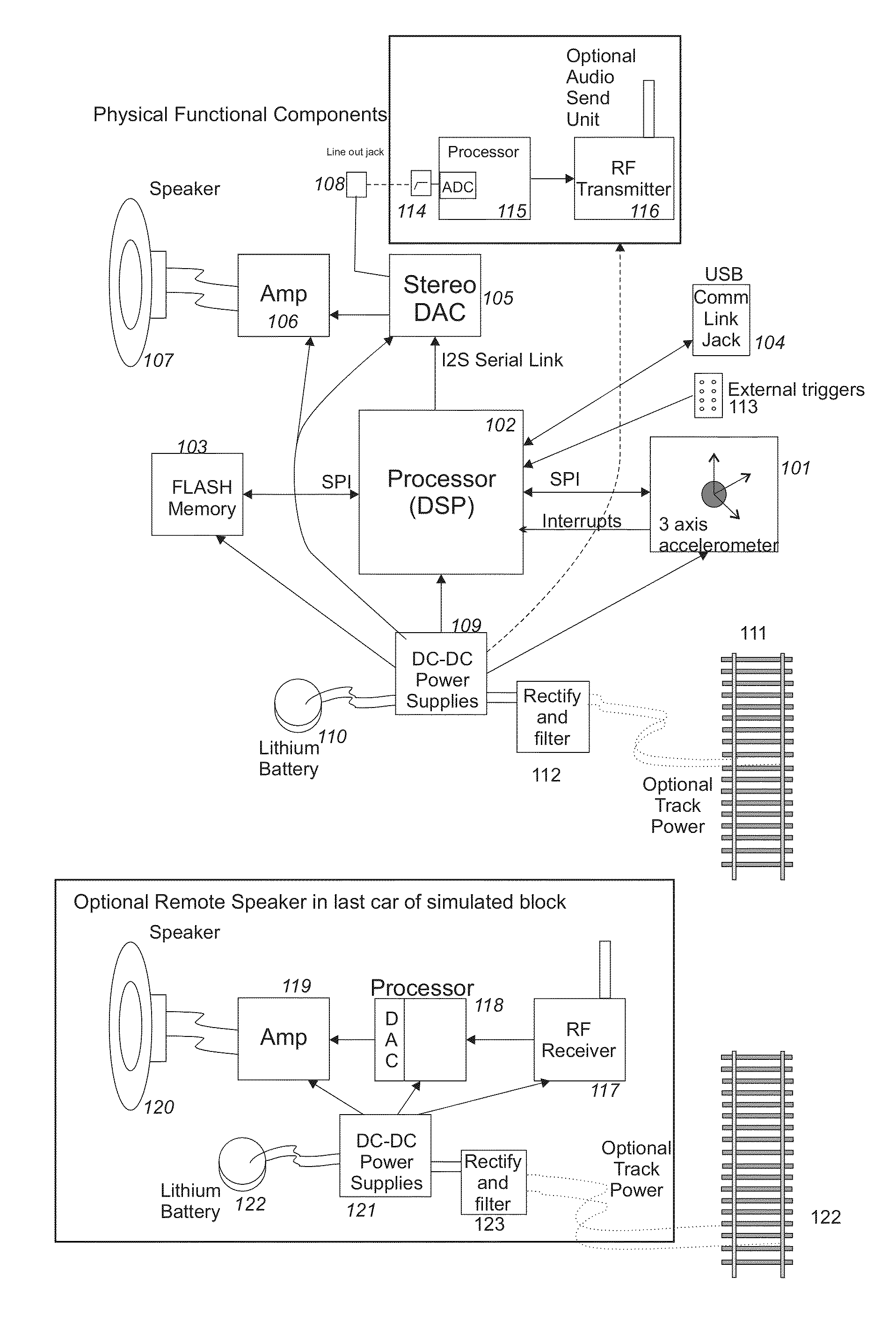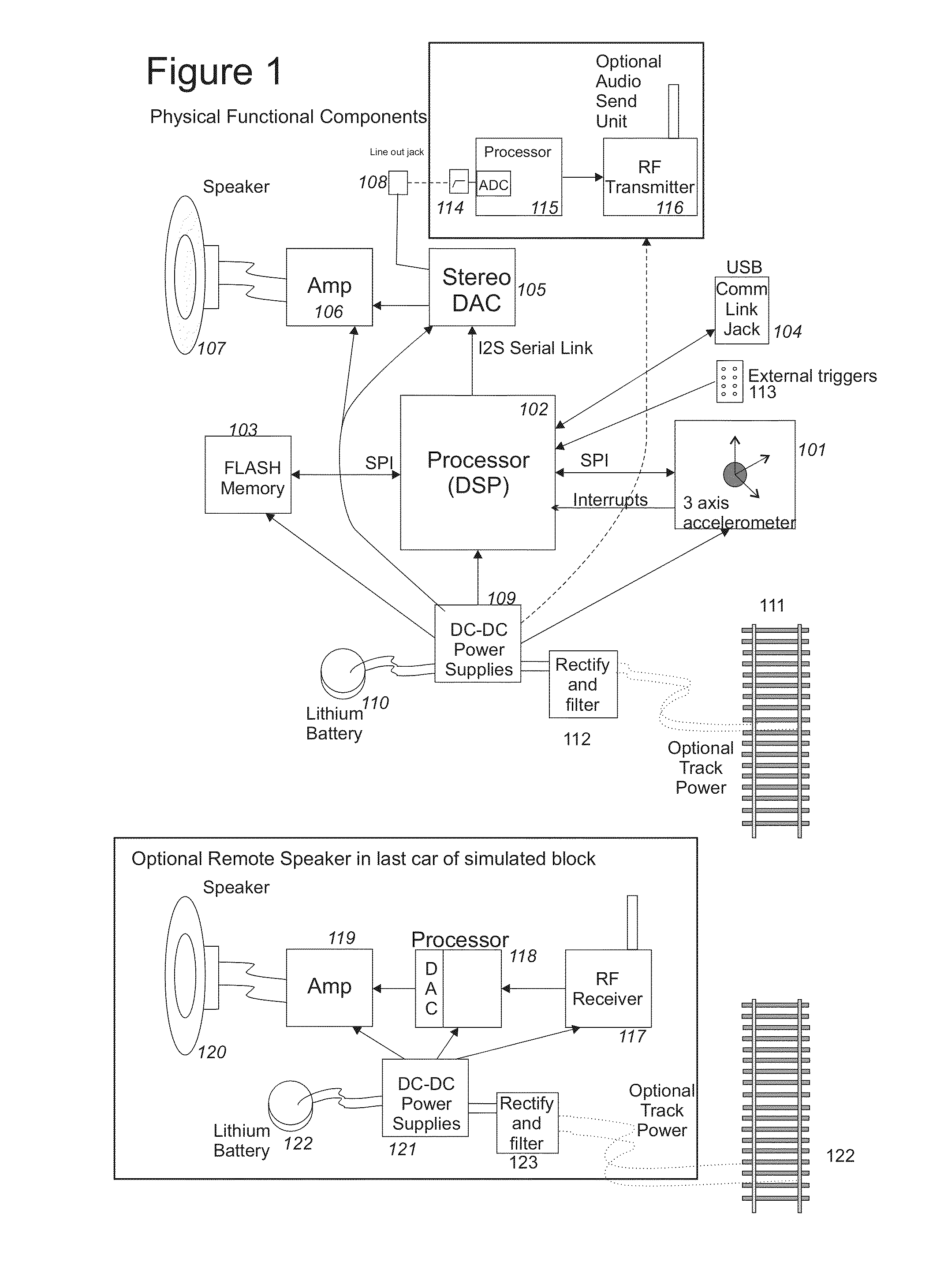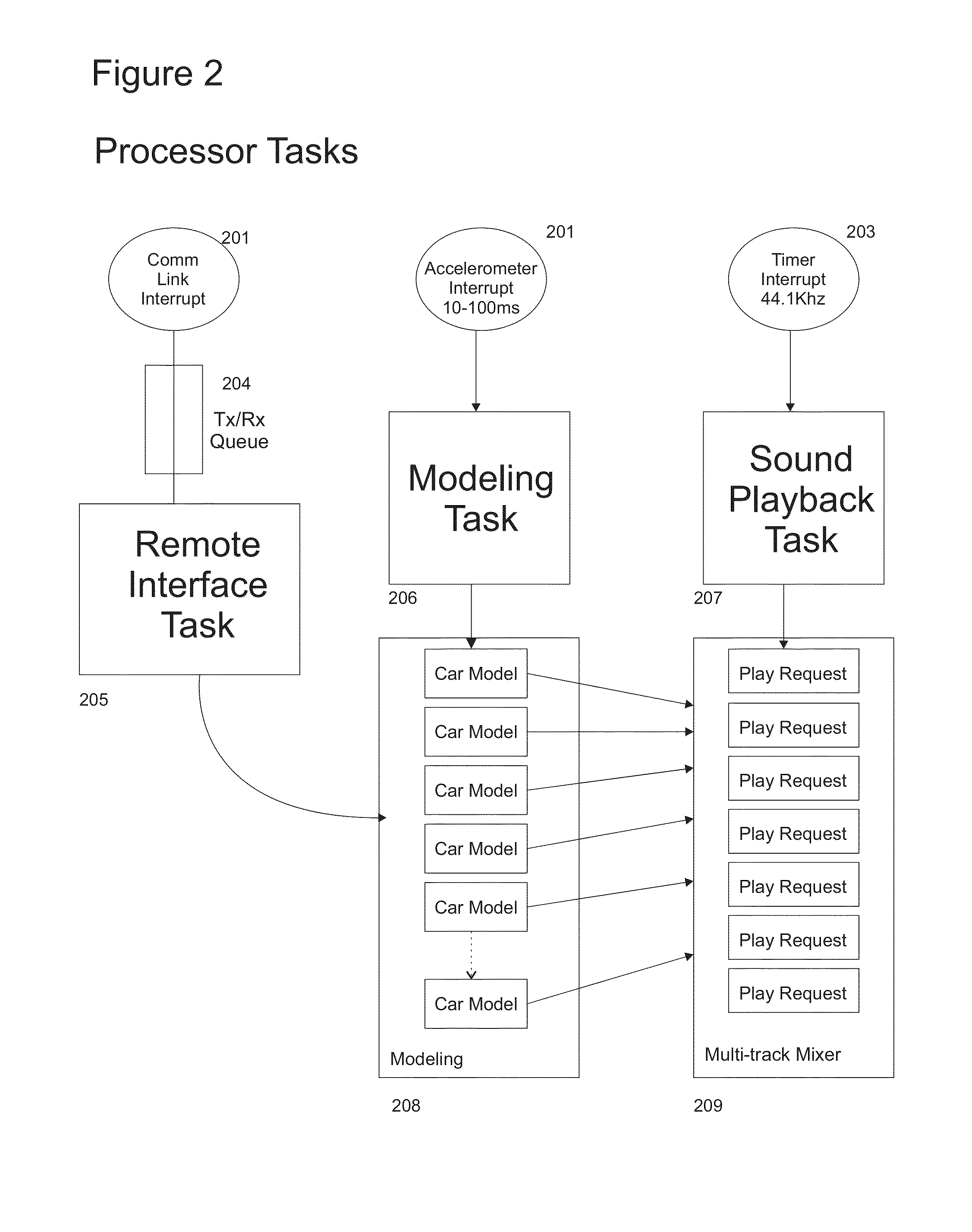Physics Based Model Rail Car Sound Simulation
a technology of sound simulation and model railway, applied in the direction of model railways, toys, entertainment, etc., can solve the problems of inability to provide input to a model, the cost of high-quality sound systems, and the limited use of engines in engine controllers
- Summary
- Abstract
- Description
- Claims
- Application Information
AI Technical Summary
Benefits of technology
Problems solved by technology
Method used
Image
Examples
Embodiment Construction
[0022]The disclosed embodiments relate to a system for use with a model railroad which models, for one or more of the model rail cars, the actual sounds made by the real rail car(s) modeled thereby and having certain characteristics, including general operational characteristics, wear, age, defects, etc., when subjected to various physical stresses / actions during operation. The disclosed system senses similar physical stresses / actions as applied to a model of the rail car during modeled operation thereof and generates corresponding simulations of the actual sounds which would be made by the actual rail car under similar operational conditions, wherein the generation of the simulated sounds may account for the characteristic of the rail car (age, wear, defects), regardless of whether the model of the rail car models those characteristics. In particular, the disclosed embodiments relate to generation of railcar sound effects for a model railroad based on a simulation of the physical a...
PUM
 Login to View More
Login to View More Abstract
Description
Claims
Application Information
 Login to View More
Login to View More - R&D
- Intellectual Property
- Life Sciences
- Materials
- Tech Scout
- Unparalleled Data Quality
- Higher Quality Content
- 60% Fewer Hallucinations
Browse by: Latest US Patents, China's latest patents, Technical Efficacy Thesaurus, Application Domain, Technology Topic, Popular Technical Reports.
© 2025 PatSnap. All rights reserved.Legal|Privacy policy|Modern Slavery Act Transparency Statement|Sitemap|About US| Contact US: help@patsnap.com



